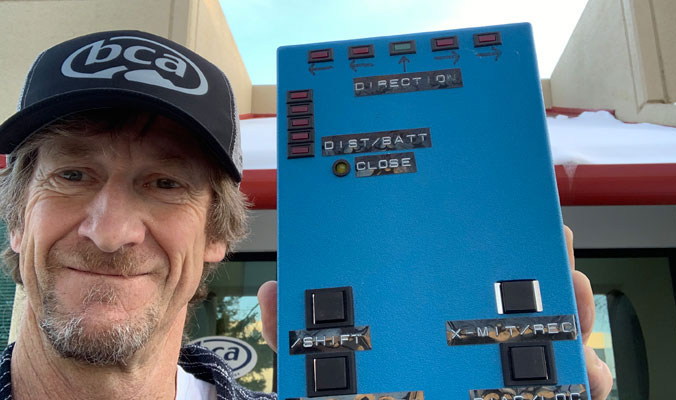
In 1994, Bruce Edgerly, along with Bruno McGowan, founded Backcountry Access in a South Boulder , Colo. garage. At the time, telemark gear was the easiest means with which to access the backcountry, but Edgerly was unwilling to accept its limitations. By 1996, he began producing and selling the Alpine Trekker, an adapter that interfaced with alpine bindings and boots, enabling a free heel for uphill mobility. The metal mechanism would help many skiers make their first foray into the backcountry.
The Trekker was just the beginning for BCA. In 1997, they released the first iteration of the Tracker beacon, dubbed the Tracker DTS. “We would go on hut trips to the Alfred Braun Huts, and usually on the first day you’d go out and do a little beacon practice, and everybody would always completely flail doing the grid searches,” Edgerly explains. “So one of our friends who was an electrical engineer said, ‘I can do better than this by making a digital version.’ That’s how it started.”
The Tracker was the first beacon with a digital interface and two antennae, which allowed for precise spot searches. “In the old days, you had to walk around in a systematic grid pattern and determine when the signal was getting stronger and weaker and change direction,” Edgerly continues. “With two antennae, the transceiver could compare the signal strength on each antenna and tell you which direction to go to make the signal equal on both antennae, then crunch the numbers to tell you how far away the signal was.”
BCA, now celebrating its 25th anniversary, has innovated far beyond the Alpine Trekker and that first Tracker. Subsequent Tracker iterations—the 2, 3 and new S—are perennially the top-selling avalanche transceivers in North America, and in addition to significant education and avalanche-safety marketing from BCA, the company wares include shovels, probes, avalanche airbags, two-way radios and more.
“Instead of just making reactive equipment like transceivers and shovels that you use once someone gets buried, we’ve been getting more proactive—airbags for instance—to prevent yourself from getting buried,” Edgerly says. “We’re focused on prevention through radios; communication is often a big contributor to avalanche accidents, so our radios are also a proactive tool.”










Related posts:
Jeremy Jones on dancing down spines, innovating new tech and fighting for our planet’s future
25th Anniversary Editor's Note: Long Train Running
Steep-skiing boundary breaker Hilaree Nelson dishes on her formative years and staying rooted at 8,0…
Nine timeless items to rely on season after season